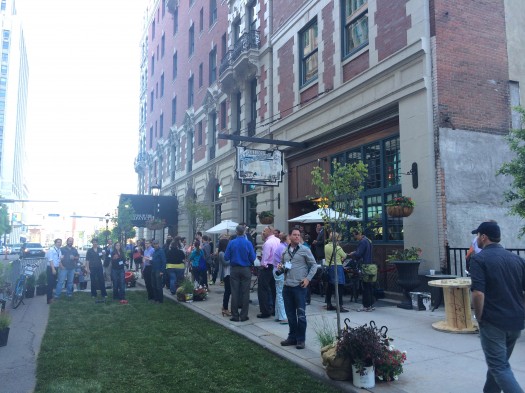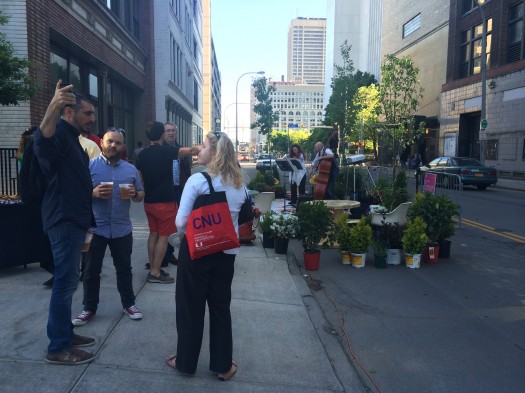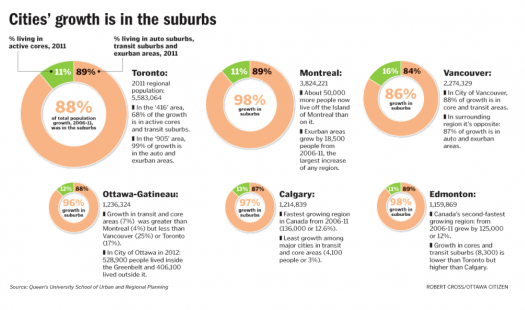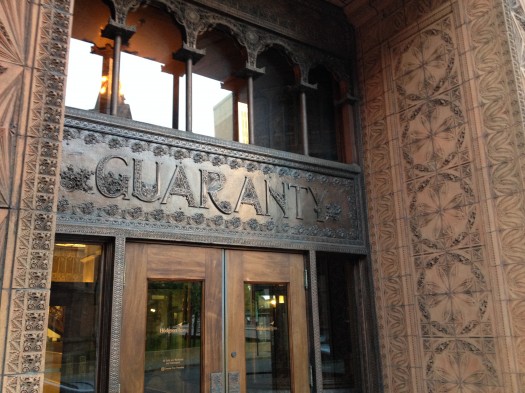A Placemaking Journal
Urbanists Soak Up Buffalo: PlaceMakers empty their notebooks
 The 22nd annual gathering of the CNU wrapped up Saturday night, June 7, in Buffalo. We’re looking forward to the recordings at cnu.org over the next few weeks to fill the inevitable gaps, since the competing sessions and hallway conversations presented the usual embarrassment of riches.
The 22nd annual gathering of the CNU wrapped up Saturday night, June 7, in Buffalo. We’re looking forward to the recordings at cnu.org over the next few weeks to fill the inevitable gaps, since the competing sessions and hallway conversations presented the usual embarrassment of riches.
Rather than go for a tidy narrative, let’s just share some random observations and sound bites from the four days.
QUICK IMPRESSIONS
Here’s to Buffalo: Long beloved by urbanists for its abundant examples of timeless design and even more for its gritty determination to overcome the toughest of challenges before “legacy” cities in the post-industrial era. Love the city. Love the people. Love the location, too, across the river from Canada, which made for a decidedly international event.
GenNext next: The location might have also explained the number of welcome new faces at the Congress, especially the under-30 crowd from across the border and from universities in easy travel range of western New York. Here come the Millennials.
Welcome back, developers: A surprising number of those younger attendees also swelled the ranks of the private developer crowd. Yeah, developers. Remember them? Happy to see a vanguard emerging from their bunkers and safe houses after the long recession.
Unexpected cool tour: Those grain silos. Their size and number brought home the significance of an era of industrial ag long gone from the experiences of modern day planners and economic developers. Despite not being able to attend herself, Canadian artist and architect Karen Shanski from Winnipeg designed the silos’ lighting, which delighted folks on the tour.
Best board chair transition ever: Departing CNU board chair Ellen Dunham-Jones to new chair Doug Farr. They passed the torch — literally — in a dance at our PlaceMakers party on Friday night dressed as the John Travolta/Uma Thurman characters from Pulp Fiction. So clearly possessed was Ellen, it may take an exorcism to separate her from Uma.
Newest challenge to Steve Mouzon as fastest thinking, fastest talking New Urbanist: Lynn Richards, who took over from John Norquist as CNU’s new CEO. Lynn seemed to have talked to each conference attendee individually, attended 300 meetings and still found time to change the oil in the host hotel’s airport limos and draft an offensive game plan for the Buffalo Bills’ home opener. That was Friday.
Carrying on traditions: In honor of champions no longer with us, the Groves Award went to Rick Bernhardt, the Planning Director for the City of Nashville, who’s Transect-based code has generated close to a billion dollars in new construction; and the Barranco Award was given to R. John Anderson, designer/developer/builder and truth teller about the brain damage required of competent design and construction.
Urbanisms galore: One great characteristic of CNU is the many different frames people put on particular ideas, approaches and subsets of the larger urban picture. Seen or heard this year was: “New New Urbanism,” “Good Urbanism,” “Better Urbanism,” “Lean Urbanism,” “Tactical Urbanism,” “Situational Urbanism,” “Recombinant Urbanism,” “International Urbanism,” and “Coastal Urbanism.” This wide, and not uncommon, array of communications hooks being employed now finds itself at the forefront of new CNU CEO Lynn Richards’s desire to tighten up the organization’s brand messaging.
Urban resilience: It’s not just another name for sustainability or efficiency, but a matter of collective efficacy and adaptive community capacity, as in community empowerment and economic development — and the fact that this definition comes from the American Psychological Association shouldn’t undercut the strength of this statement.
Climate change in wet weather cities: We shouldn’t shy away from taking on a culture that spends billions to bottle rainstorms and treat them in favor of places that catch raindrops where they fall productively, anymore than we shied away from redefining transportation from a throughput and speed-based approach toward one that creates and captures value locally. The work that needs doing is in the places that need work.
Lean Urbanism: All communities have assets that are too often hidden, scattered and poorly utilized. An essential step to moving from scattered to aligned and from poorly to well-utilized is the revealing of those assets. Open Source data makes city legibility and therefore lean urbanism possible, but working neighborhoods need both roots and wings — thinner policies and more sustainable apps — somewhere between common sense and consensus
POINTS WORTH REPEATING
Enrique Penalosa: A developed country is not a place where the poor have cars, but where the rich use public transportation. Cars kill thousands of children every year, and we think this is normal. We are creating cities not for the next 5 years, but for the next 500-1,000 years. We have an opportunity the world has never had before because we have never had such fast urbanization rates.
Gil Penalosa: Paint does not work, since when do cars listen to paint?
Joan Clos: Worldwide, a new paradigm is near. If we don’t address problems of how to grow our cities in resilient patterns, we will have a very difficult time. China is preparing to build 100 new cities of 2.5 million people each. These cities are scheduled to take a few years each to build, while the building of a city until now has taken decades or even centuries. Mistakes at high speed are costly to reverse. Only 20 out of 193 countries in the world have a national urban policy. Urban policy core questions: Where is your population today? In 25 years? What will government do about that? Central government really must learn to take responsibility for the success or failure of their urban policy. If you have less than 30 intersections per square, it’s not a walkable city. It’s an easy calculation, which the H+T Affordability Index will do for you instantly. What is percentage of the city that is allocated to the street? In urban places, it’s usually about 30-35%, developing world 10%, and slums 2%. At the same time we are segregating land uses, we are segregating by social group as well. You are destroying the city when you gate its parts.
Norman Garrick: Streets are social places and need to be designed to reduce speed in the city.
Ben Hamilton-Baillie: Effective campaigns have unfortunately removed streets from shared space, from the public realm. A safe street is one that tells a rich story about local character.
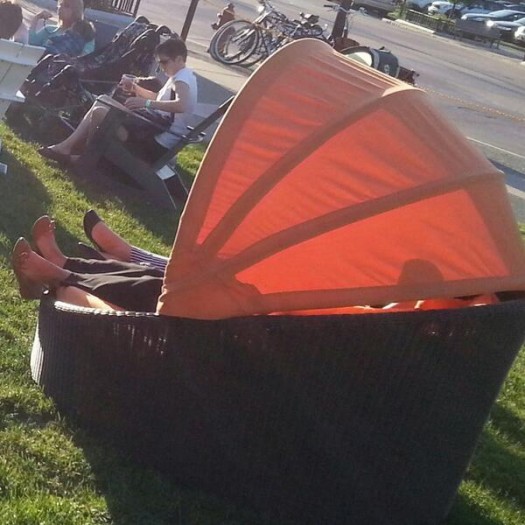
Hard to explain to traffic engineers, but this is good Level of Service. ~ @Boenau. Image credit: Andy Boenau
Susan Henderson: Place types & community types (hamlet, village, town and city) enable certain combinations of transect zones. When undertaking zoning reform, the first question is what is the nature of the intended change? Are you trying to maintain, expand, or regenerate each regional sector? Proximity to infrastructure and intersection density should drive intended growth at the regional scale.
Matt Lambert: The Smart Growth Manual tells you why. The Lexicon tells you what. The SmartCode tells you how. The SmartCode cannot be adopted off the shelf. It’s a framework. The frontage – the way the building meets the street – controls the character of place.
Marina Khoury: The Miami 21 SmartCode rolled 360 land uses into 43 character zones. Miami21 has had 34 amendments since May 2010 because form-based codes are living, breathing documents.
Hazel Borys: Top 10 ways to wreck your form-based code: 1. Don’t articulate a vision. 2. Make it mandatory citywide. 3. Misapply the transect to the region. 4. Fail to capture local character. 5. No investment to retrofit the public realm. 6. Kill the market with misguided up-zoning. 7. Downzone properties without adequate compensation. 8. Overcomplicate administration. 9. Write confusing text and photo regulations. 10. Offer solutions out of line with the local problem set.
Robert Orr: LEED needs to aspire to a system that rewards the highest performance achieved at the lowest cost. LEED is running the same risk as zoning: segregating modules so you can do LEED-ND & LEED for buildings. John Scofield, Oberlin physicist, shows 7,000 LEED buildings at universities among the worst performers on campus. We need a better, leaner way to measure.
Ken Greenburg: The car-dominated paradigm has tested to failure and needs to be fixed. Wall Street treats development like derivatives. “Perverse subsidies” continue to encourage costly, difficult to adapt, non-resilient infrastructure.
Charles Montgomery: The patterns of cities – particularly public spaces – impact how much we trust each other. Trust is the biggest contributor to happiness. We are more likely to trust in a connected neighborhood. People are happier in messy, engaging mixed-use instead of blanked-wall mixed-use. And nature isn’t just good for you. It makes you nicer.
Jennifer Keesmat: What makes cities change? Believe (it can happen) + research + envision + engage. Great urbanism pays careful attention to design details. As Toronto gets denser, the quality of air is getting better, thanks to cyclists & transit riders. The City is one of the most resilient globally. Downtown Toronto – the most urban, walkable part of City – is growing at four times the rest of the City. Cities that don’t attract EcoBoomers will vanish. We must transform the conversation to transform our cities. When CNU began, it was on the edge of planning practice. With its success, it has reshaped the dialogue. City planners, start with your similarities, not your differences.
Harriet Tregoning: Cars are unused 95% of time. Resilient cities share their unused assets. Resilient Cities are re-planning and rebranding their buses. The poster child for sprawl – Tyson’s Corner – is rebranding itself as “Tyson” as it becomes urban via sprawl repair. When your master plan or code is finished, make the city planning an experience with immediate tactical urbanism. Like the “temporiums” test out retail in D.C. Innovate -> fail -> innovate -> succeed. If you’re not failing, you’re probably not innovating.
Naomi Sachs: Health isn’t just about not being sick; it’s about wellbeing. Olmsted liked to say, “Parks are the lungs of the city.”
Ellen Dunham-Jones: The CNU is a forum, not a formula.
Jeff Speck: Most of the safety issues in our cities are car-related, not crime-related. Pedestrianized streets in USA have had 95% failure rate, so careful about making huge investments. In San Francisco, every passenger mile travelled by rail replaces 9 miles travelled by car, which is the multiplier effect.
Mark Abraham: Instead of taking very long vacations, we commute 50 minutes to work each day. 10 hours/week of commuting is equivalent to a 12 week vacation.
Russell Preston: 7 platforms: people, lifestyle, civicism, economies, agility, value, and authenticity.
Jennifer Hurley: Write the agenda in questions. This will inhibit the impulse to report out.
David Gordon: Canada is great at comprehensive city planning but needs to do much better at adopting better land use by-laws. For now, Canada’s growth is still in the suburbs. Best Canadian mid-rise: The Bridges. The Beach. West Don Lands. The King Portland Niagara. The Rise. Markim Centre. Port Credit.
Scott Polikov: Don’t just capture value. Drive it. Capital investments need to focus on the outcomes, not just the outputs. CIP needs to behave like a portfolio manager.
Robert AM Stern: Suburbs are like cholesterol: there are good suburbs and bad suburbs. “No great town can long exist without great suburbs,” Frederick Law Olmsted. Olmsted planned about 4 trees per inhabitant in Riverside. Olmsted planned for future tax revenues to pay for the park at Parkside in Buffalo, in 1876. It’s satisfying when the countryside comes up clean and fresh to the boarder of the (dense) city.
Hank Dittmar: Lean Scan Step 1: Asset Inventory. Step 2: Asset Mapping. Step 3: Buron Inventory. Step 4: Integration. Step 5: Incremental Intervention.
Sandy Sorlien: Today’s zoning codes are accretions of controls, redundancies, contradictions and delays that stymie their users.
James Howard Kunstler: Choosing to be ‘excellent’ is more important to cities than attempting to be innovative.
Andrés Duany: The Lean Seam makes city planning knowledge available to the next generation in an accessible and speedy way. Pink Codes and Pocket Codes are a format or attitude about lightening zoning ordinances. They are not templates. A form-based code is like an urban planned unit development (PUD).
For more notes from CNU22, check out the twitter feed from the event, with particular thanks to Steve Mouzon, Mark Abraham, Eliza Harris, Howard Blackson, Kristen Jeffers, Charles Green, Jeff Speck, Victor Dover – and, especially Canadian Colleagues: CanU, Gian-Carlo Carra, Charles Montgomery, Gil Penalosa, Brent Toderian, and Jennifer Keesmat.
Want to join in the fun next year? The conversation, debate and dancing renews at CNU23 in Dallas-Fort Worth, April 29 – May 2, 2015.
—PlaceMakers, with Scott Bernstein
If PlaceShakers is our soapbox, our Facebook page is where we step down, grab a drink and enjoy a little conversation. Looking for a heads-up on the latest community-building news and perspective from around the web? Click through and “Like” us and we’ll keep you in the loop.


